

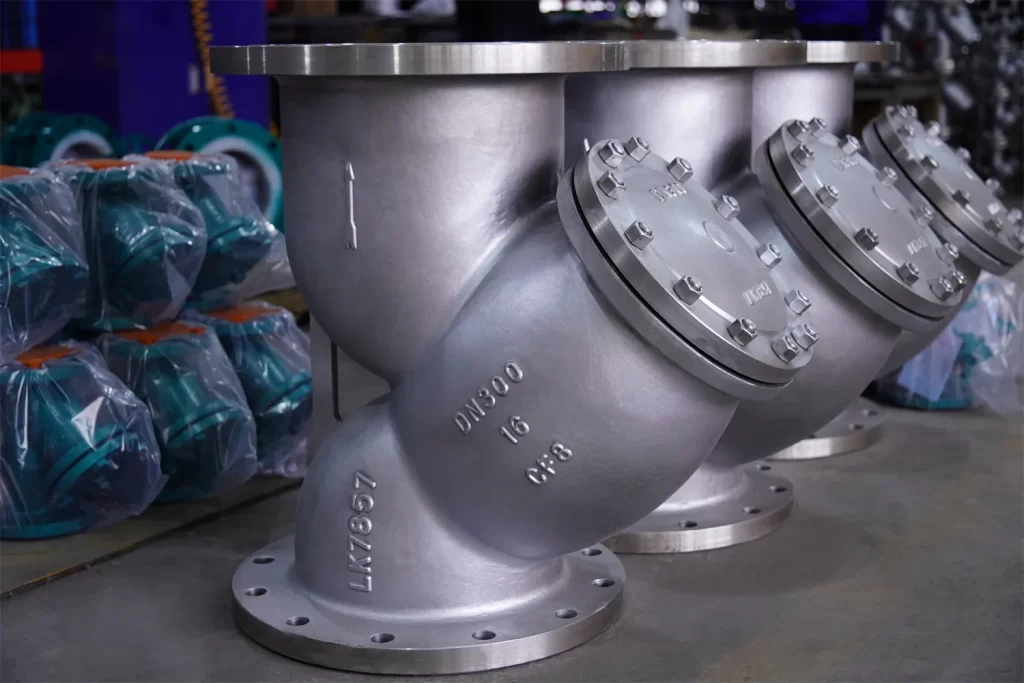
In industrial fluid systems, proper filtration is vital to protect equipment from debris and contaminants. Y strainers and T strainers are two common types of pipeline strainers used to ensure clean fluid flow. While both serve the same purpose, their design and application differ significantly. This article explores the key distinctions between Y strainers and T strainers, helping you make an informed choice for your pipeline needs.
A Y strainer is a mechanical device used in pipelines to filter out debris such as dirt, rust, and other solid particles from liquids, gas, or steam. The Y type strainer gets its name from its Y-shaped design, which includes a screen or mesh filter that intercepts unwanted materials. By capturing debris, a Y strainer ensures the smooth operation of downstream equipment like pumps, valves, and meters, reducing the risk of damage and lowering maintenance costs over time.
The Y type strainer operates by directing the flow of fluid through a mesh or perforated screen. As the fluid passes, solid particles are trapped in the screen while the clean fluid continues downstream. The trapped debris can then be removed periodically through a “blow-off” valve or by manually cleaning the screen. This design makes Y strainers suitable for applications requiring moderate filtration in systems operating under high pressure or temperature.

A T strainer, also known as a t type strainer, is another mechanical filtration device designed to remove unwanted particles and debris from liquids and gases in pipelines. Unlike a Y strainer, the T strainer has a larger, T-shaped body that houses a removable basket strainer. This design provides more filtration capacity and is ideal for high-flow systems with significant debris levels.
The T type strainer operates by directing fluid through a filter basket housed inside the vertical section of the T-shaped body.
The vertical design of the T strainer makes it easy to access the filter basket for cleaning or replacement. Additionally, many models are equipped with drain valves to simplify debris removal without disassembling the unit.
| Feature | Y Strainer | T Strainer |
|---|---|---|
| Design | Compact, Y-shaped | Larger, T-shaped with removable basket |
| Filtration Capacity | Handles low debris levels | Handles high debris levels |
| Pressure Drop | Higher due to smaller open area | Lower due to larger filtration area |
| Installation | Horizontal or vertical (downward flow) | Typically horizontal, sometimes vertical |
| Ease of Maintenance | Requires disassembly for cleaning | Quick-opening covers for easy cleaning |
| Applications | Steam systems, low-pressure pipelines | High-flow, high-debris pipelines |
Choosing between a Y strainer and a T strainer depends on your system’s specific requirements. Y strainers are compact, cost-effective, and work well in low-debris systems. On the other hand, T strainers excel in heavy-duty applications, offering higher dirt-holding capacity and easier maintenance.
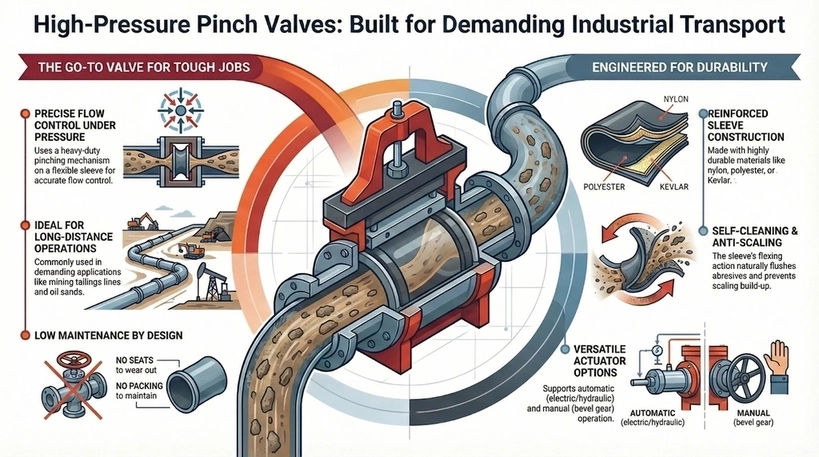
High pressure pinch valves, like PN16 pinch valve and class 150 pinch valve designs, involve a rugged and heavy-duty pinching mechanism in positioning the sleeve, resulting in an almost accurate and measurable flow of media. This kind of valve is popular and commonly used for long distance operations in mining tailings lines or oil sands, […]
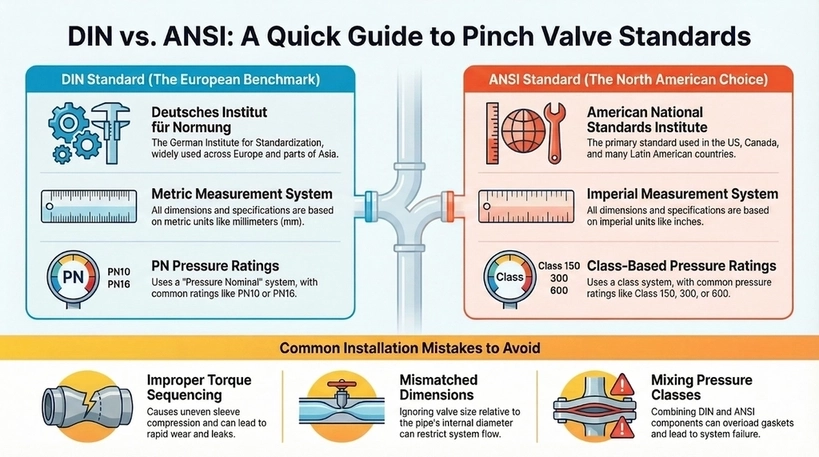
Understanding pinch valve dimensions and flanges ensures seamless integration into piping systems, particularly when choosing between DIN vs ANSI. The two are different but commonly used standards by organizations in engineering, manufacturing, and product design. DIN was developed in Germany but widely adopted across Europe and parts of Asia. Meanwhile, ANSI standards, which originate from […]
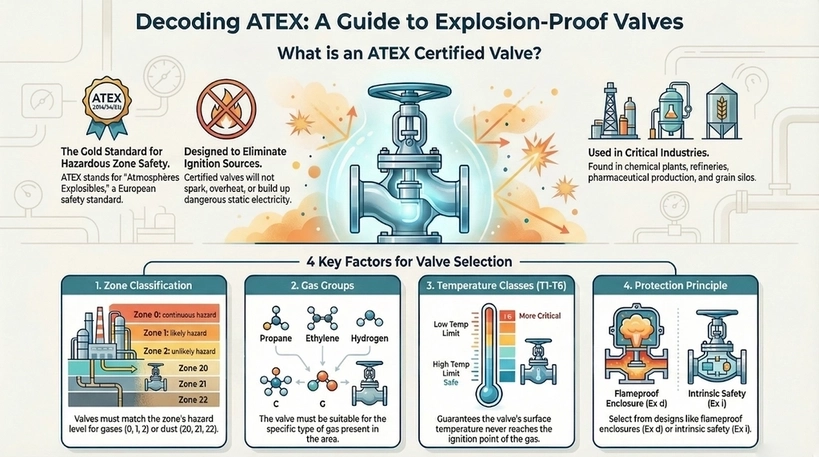
Selecting the appropriate explosion proof valve is essential for safety in industries that pose explosion risks. ATEX certified valves guarantee compliance with European standards, preventing ignition sources from heat, sparks, or static electricity. This blog explores key factors for choosing ATEX certified explosion proof valves that ensure overall operational safety, highlighting the entailed regulations and […]
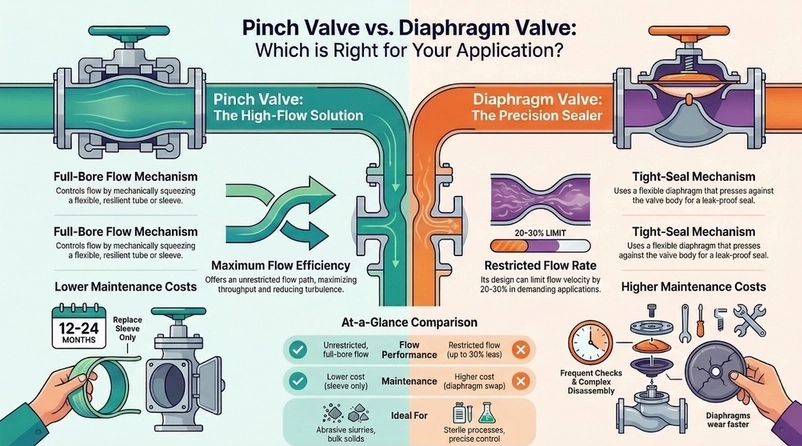
When handling abrasive or viscous media in industrial processes, the type of valve used can heavily affect the performance, efficiency, and overall user experience. In relation to this, two of the most common valve options are pinch and diaphragm valves. In this blog, we delve into the pinch valve vs diaphragm valve discussion, analyzing flow […]



